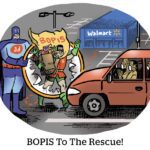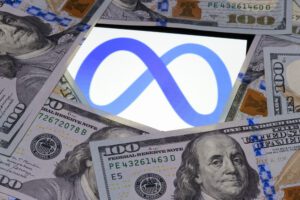La Colombe was ready to shake up its marketing mix like a glass of cold-pressed espresso, oat milk and ice cubes.
Coming out of COVID-19 lockdowns in February 2022, La Colombe saw customers returning to cafés in person but a dip in site traffic. The company’s most pressing goal became driving site traffic from new audiences – a goal it maintains today.
At the time, La Colombe’s media mix included affiliate, paid search, paid social and some display activity. “Video seemed like an obvious choice” to stir into the mix, said Marykate Byrnes, director of media and growth marketing at the US coffee roaster and retailer.
The timing was fortuitous. Cold-brew season was approaching, and the brand had visual assets on hand from a recent photo shoot. La Colombe ran a head-to-head test with four video partners that used the same ad flight and creative.
The only difference was their targeting approaches: One big CTV partner used contextual alignment, while other video partners used third-party segments. Another partner’s calling card was its AI technology, which it used to run custom one-question online surveys prior to the campaign launch.
In the loop
The AI video partner, LoopMe, asked users: “Which of the following is your favorite coffee brand(s)?”
Via this live consumer insight survey, LoopMe found real-time shoppers of La Colombe’s competitive set, including Starbucks, Dunkin’ and Black Rifle.
Once the results came back about two weeks later, LoopMe targeted coffee drinkers who purchased coffee online (category shoppers) and those who didn’t express an opinion about La Colombe (new to brand). It found more new consumers via its predictive AI models.
As for how these models work, LoopMe’s model ecosystem picks from 1,500 prebuilt machine-learning models. These off-the-shelf models “perform small, continuous, autonomous tests” and refresh daily, said Rob Cukierman, LoopMe’s general manager of product strategy and commercialization.
As new data comes in about users and their conversion rates, the model continuously optimizes the media and audience targeting based on who’s converting. The best-performing model at any given time delivers the campaign.
The campaign refinements take place in an ongoing loop: The data predicts who the next audience will be, delivers a campaign, then uses the feedback data from that campaign to inform the next decision.
LoopMe’s ML models pull data from between 70 and 100 features across its DMP, such as site-level tags with location, device and time of day. These tags also inform campaign measurement and attribution.
Once LoopMe settled on an audience, it ran mobile in-app ads across its inventory partners, which include more than 150 SSPs and numerous mobile web and in-app direct publishers, according to Cukierman.
Vid the wonderkid
Since that initial test, La Colombe has run more campaigns with LoopMe, including DTC work throughout the holiday season, which is the brand’s primary focus for the year. The company often sees a 30% lift in performance for paid social and affiliate marketing channels following a video campaign.
One insight that emerged from the initial test with LoopMe was that people who work in the medical field and in finance made up a disproportionate number of the people who visit the site directly to buy La Colombe products.
In retrospect, “it makes a lot of sense that people in these occupations drink a lot of coffee,” Byrnes said. But they weren’t on the company’s radar as explicit audience targets. This newfound knowledge influences the site lists where La Colombe might place ads and what to feature in its creative.
Working with LoopMe also changed the geographies the company was targeting. LoopMe served video ads to shoppers outside the cities where La Colombe has physical cafés, which is where the bulk of its DTC conversions come from.
Thanks to this expanded reach, the retailer identified “opportunity markets” like Phoenix and Seattle, Byrnes said, where it previously didn’t invest in advertising.
… But not all the time
La Colombe runs video ads in short spurts to align with certain seasons or to promote key products, but it’s not looking to run paid video year-round.
“Site traffic is important, but not at the expense of my revenue goal,” Byrnes said. Video isn’t as efficient as other channels. Nevertheless, it drove 33% of total site traffic in 2022, including “a major influx in traffic” during crucial times of the year for the brand.
Paid search and paid social “still take the bulk of the dollars” in La Colombe’s media budget, Byrnes said. Within social, Meta predominates, though the brand’s done a smidgen of TikTok testing.
Setting aside the machine-learning models LoopMe deploys on its behalf, Byrnes said La Colombe will likely start using generative AI to test copy and develop headlines on its channels soon.
But leaning on AI tools for full creative development is at least a few years out, she said. An in-house team produces most of the brand’s content, and “we hold that message, the way we’re presenting to the public, very near and dear.”


















